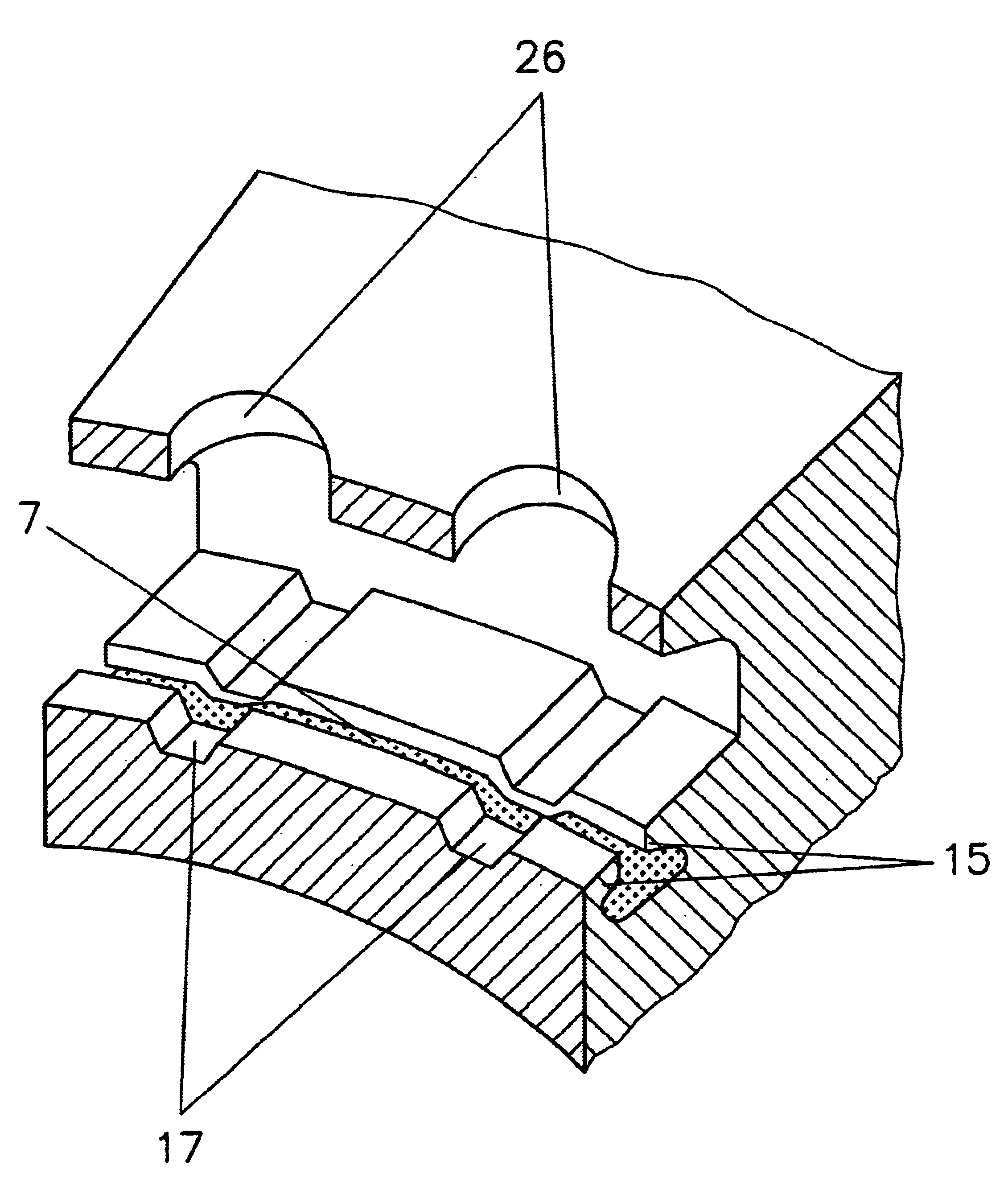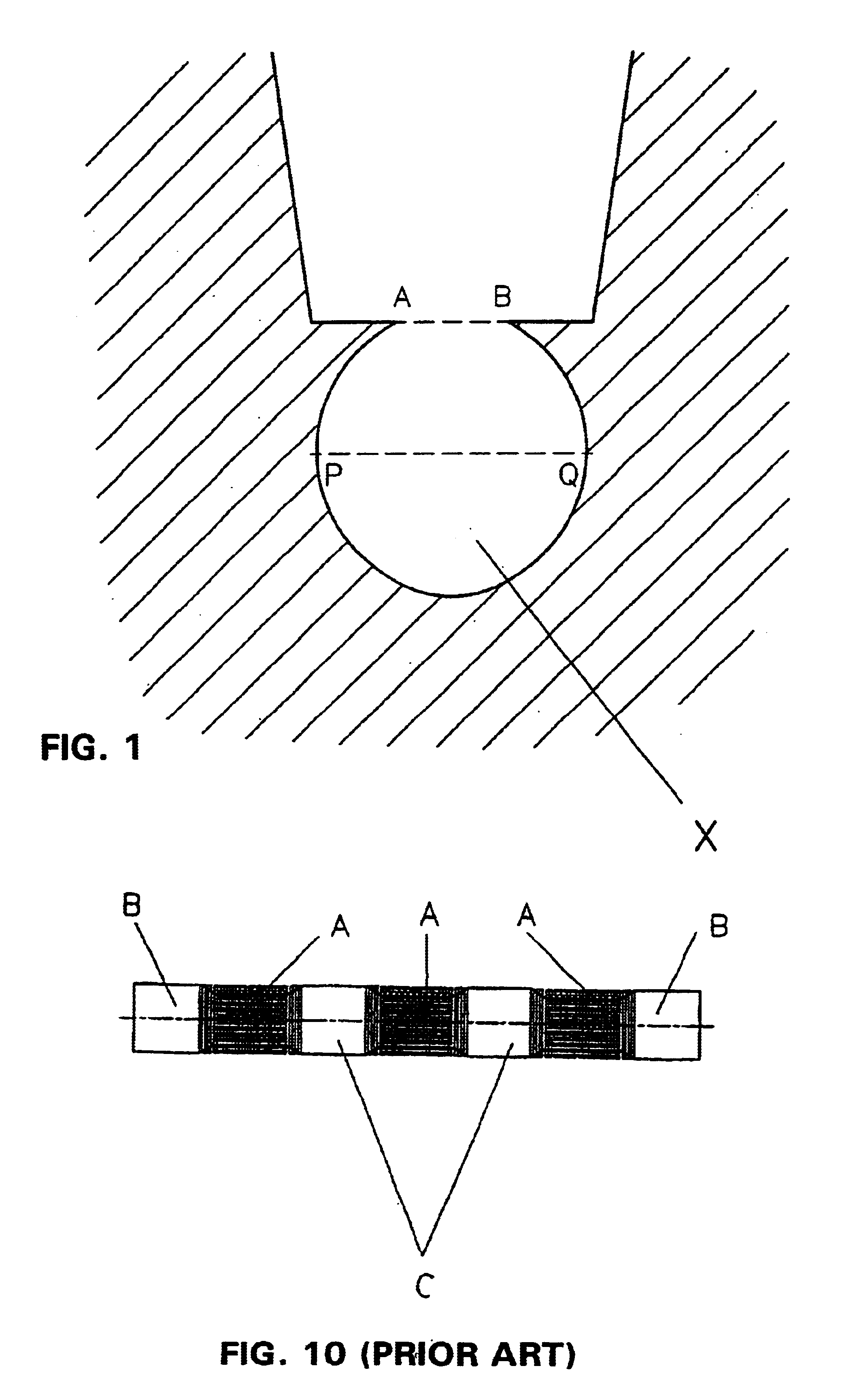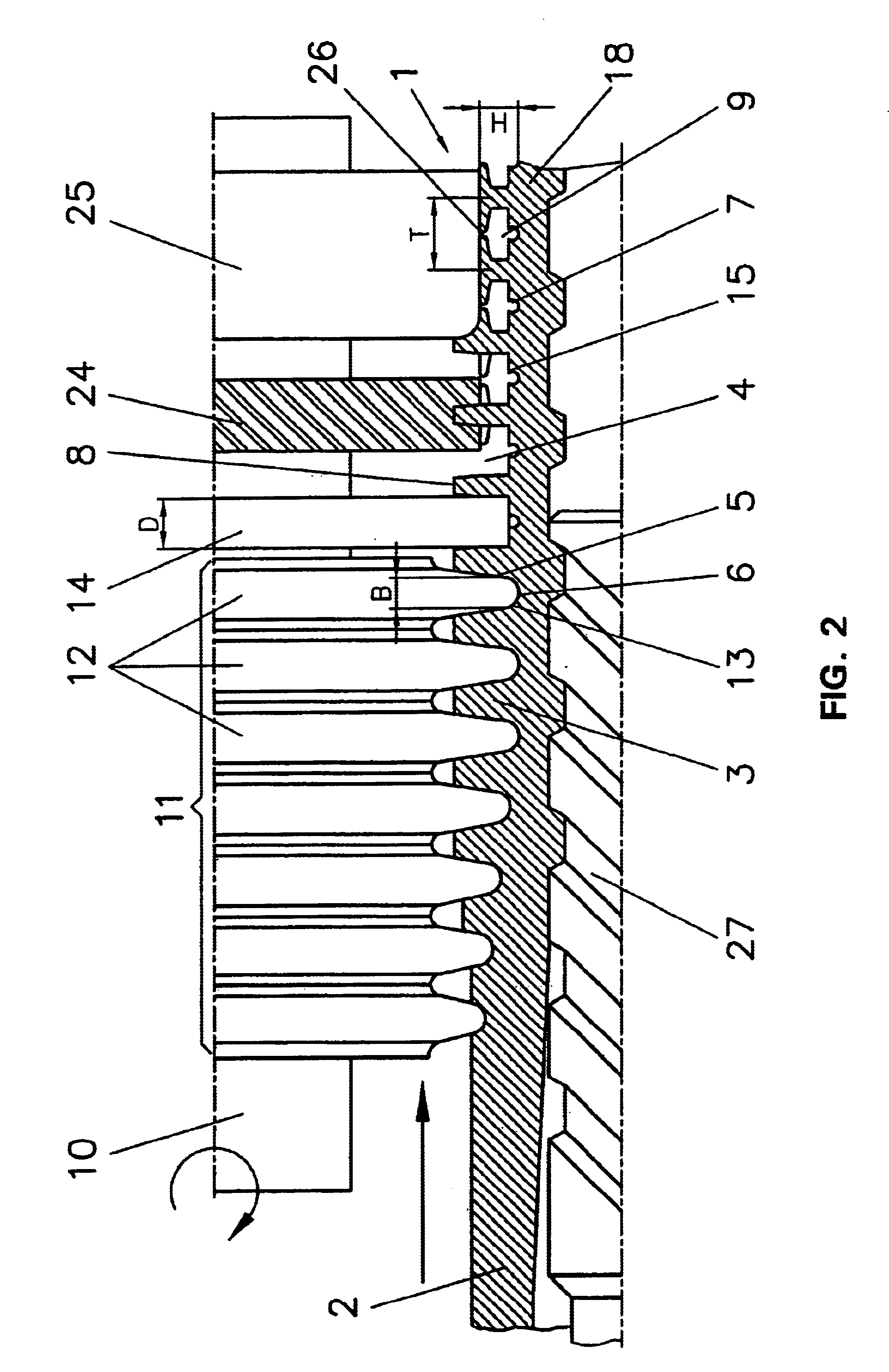Heat transfer tube and a method of fabrication thereof
a heat transfer tube and heat transfer tube technology, applied in heat exchange apparatus, lighting and heating apparatus, corrosion prevention, etc., can solve the problems of increasing the pressure drop of the tubeside, reducing the required filling capacity of refrigerant, and a significant portion of the entire cost of the system, so as to achieve the highest driving temperature difference for the formation of bubbles and advantageous for the evaporation process
- Summary
- Abstract
- Description
- Claims
- Application Information
AI Technical Summary
Benefits of technology
Problems solved by technology
Method used
Image
Examples
embodiment 1 (fig.2)
Embodiment 1 (FIG. 2)
[0034]A cylindrical disk 14 is provided immediately after the last disk 12 of the rolling tool 11. The diameter of the disk 14 is less than the diameter of the largest rolling disk 12 which completes the forming of the fin 3. The thickness D of the cylindrical disk 14 is slightly greater than the width B of the primary groove 4 formed by the rolling disks 12, the width B of the primary groove 4 being measured at the point where the fin flank 5 transfers over into the radius area of the root of the fin 13. The thickness D of the cylindrical disk is typically 50% to 80% of the fin pitch T. The cylindrical disk 14 removes material from the fin flanks 5 and effects a movement thereof toward the base 6 of the primary groove 4. The removed material is shifted by suitably selecting the tool geometry in such a manner that it forms projections 15 (FIG. 3) above the base 6 of the primary groove 4 and thus a radially open closed off cavity 7 is formed directly at the base ...
embodiment 2 (fig.4)
Embodiment 2 (FIG. 4)
[0037]This embodiment represents an expansion of Embodiment 1. That is, a gear-like notching disk 16 is provided immediately after the cylindrical disk 14. The diameter of the notching disk 16 is greater than the diameter of the cylindrical disk 14, however, at most as great as the diameter of the largest rolling disk 12 of the rolling tool 11. The cavity 7 formed by the cylindrical disk 14 and extending in circumferential direction and having a uniform cross section is partitioned by indentations 17 (FIG. 5) formed in the radially outer roof thereof by the notching tool 16 at regular intervals in the circumferential direction. Thus, the heretofore uniform cross section of the circumferentially extending re-entrant secondary grooves 7 is now varied at regular intervals. The notching disk 16 can be straight or helically toothed.
[0038]Since the diameter of the gear-like notching disk 16 is not greater than the diameter of the largest rolling disk 12 of the rolling...
embodiment 3 (fig.6)
Embodiment 3 (FIG. 6)
[0039]A gear-like notching disk 19 is provided immediately after the last disk 12 of the rolling tool 11. The diameter of the notching disk 19 is at most as great as the diameter of the largest rolling disk 12. The thickness D′ of the notching disk 19 is slightly greater than the width B of the primary groove 4 formed by the rolling disks 12, the width B of the primary groove 4 being measured at the point where the fin flank 5 transfers over into the radiused portion of the root of the fin 13. The thickness D′ of the notching disk is typically 50% to 80% of the fin pitch T. The notching disk 19 can be straight or helically toothed. The notching disk 19 removes material from the area of the fin flanks 5 and from the radiused portion of the root of the fin 13 to thereby form spaced-apart indentations 20 (FIG. 7). The removed material is preferably shifted into the not worked area between the individual indentations 20 so that coined dams 21 are formed on the base ...
PUM
| Property | Measurement | Unit |
|---|---|---|
| equilibrium temperature | aaaaa | aaaaa |
| metallic | aaaaa | aaaaa |
| length | aaaaa | aaaaa |
Abstract
Description
Claims
Application Information
 Login to View More
Login to View More - R&D
- Intellectual Property
- Life Sciences
- Materials
- Tech Scout
- Unparalleled Data Quality
- Higher Quality Content
- 60% Fewer Hallucinations
Browse by: Latest US Patents, China's latest patents, Technical Efficacy Thesaurus, Application Domain, Technology Topic, Popular Technical Reports.
© 2025 PatSnap. All rights reserved.Legal|Privacy policy|Modern Slavery Act Transparency Statement|Sitemap|About US| Contact US: help@patsnap.com



